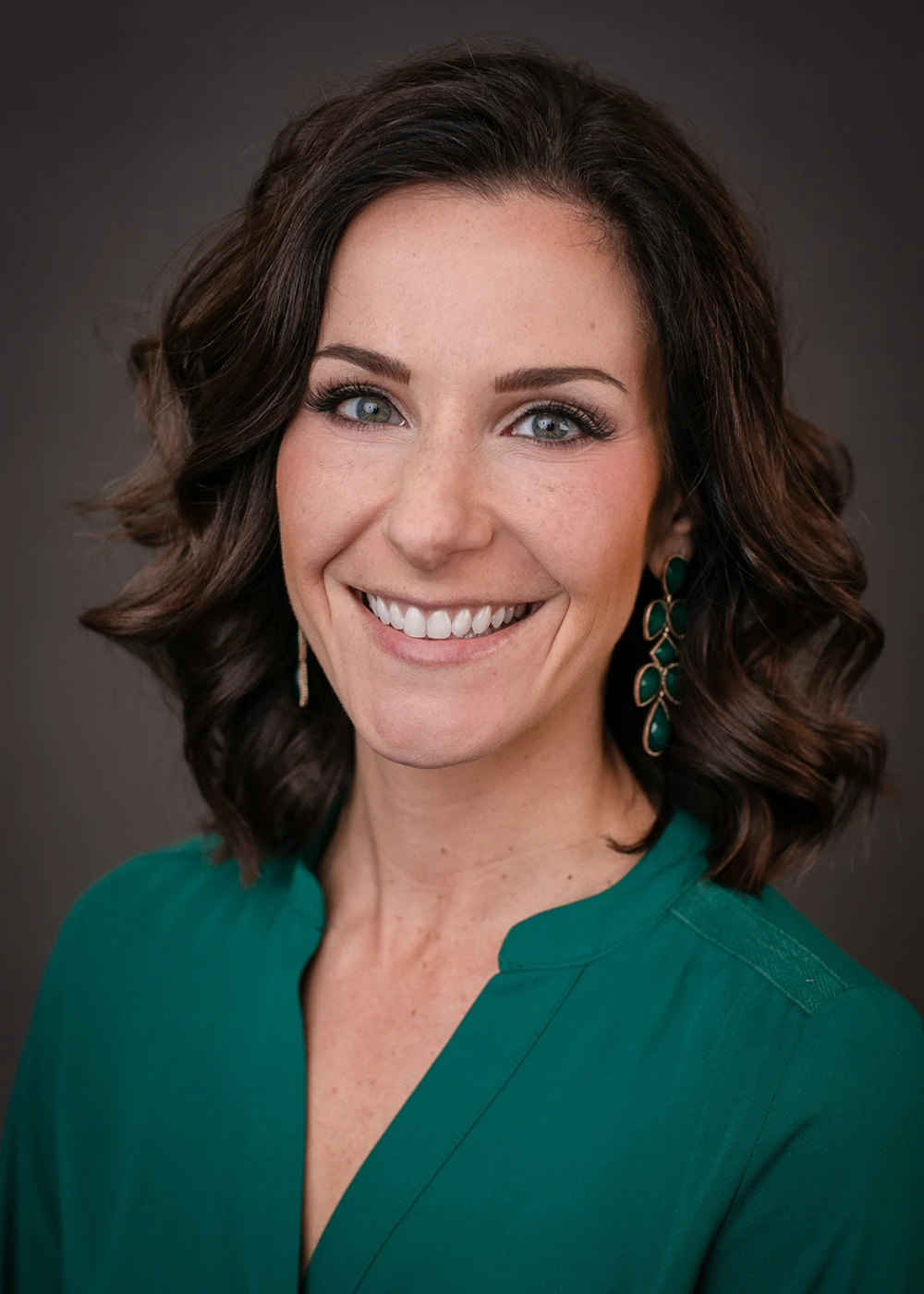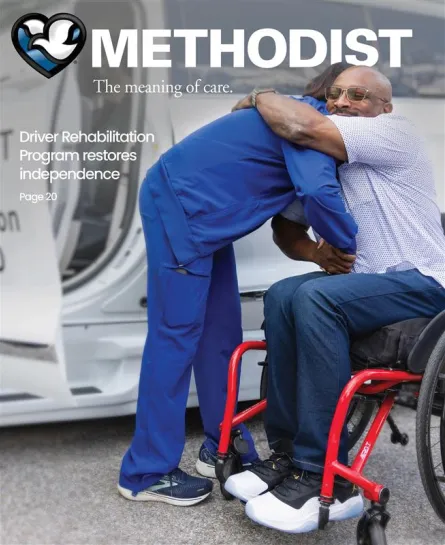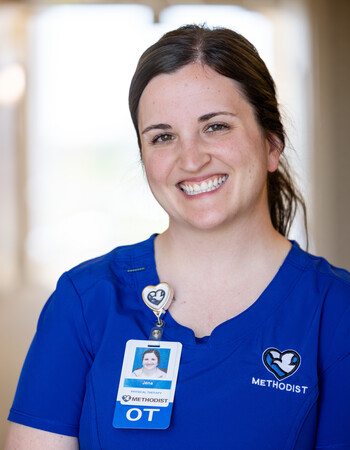





Women's Health
Methodist Postpartum OT Program helps ‘get moms back to themselves’
Published: July 18, 2024
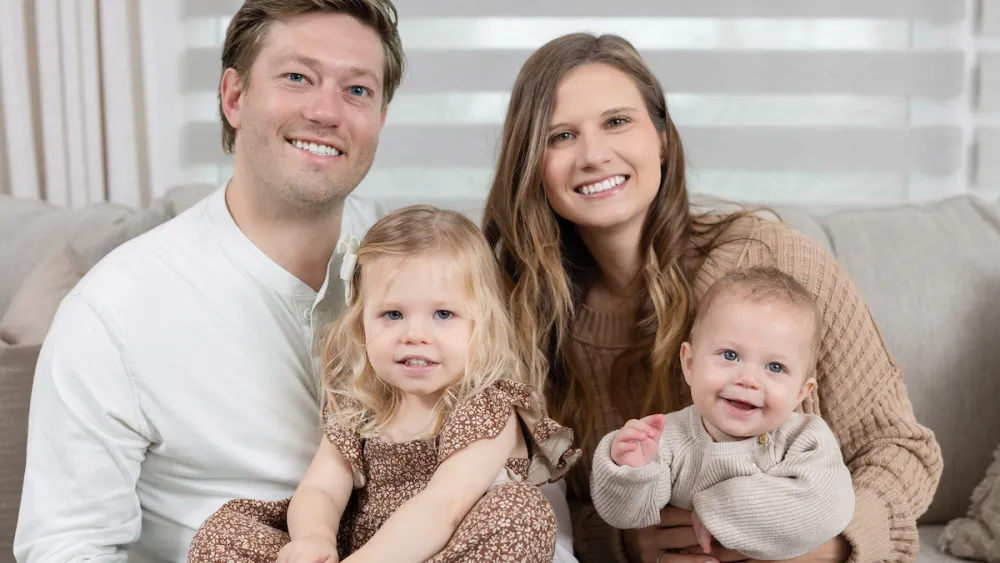
It was March 2022 when Madi Mendlik of Elkhorn went into labor with her first child at 39 weeks.
Anticipating the vaginal delivery that she resolutely included in her birth plan, Mendlik arrived at Methodist Women’s Hospital only to soon find herself in the operating room for an emergency C-section following fetal heart decelerations.
After a short neonatal intensive care unit (NICU) stint, Mendlik, her husband and baby Hadi had hardly been home before Mendlik came down with a fever and chills. An incision-site infection landed her back at Women’s Hospital – this time, in the Emergency Department.
“Did I overdo it? Did I lie down a certain way? What caused this?” Mendlik wondered.
A few days later at home while still on antibiotics, “my incision literally burst open and left me with this massive wound.” Mendlik required vacuum-assisted wound closure and packing treatment from the Methodist Fremont Health Center for Wound Healing.
“I dealt with kind of the worst,” she said.
A dose of déjà vu
Certain she didn’t want another C-section, Mendlik endured her second pregnancy with “lots of anxiety and PTSD – lots of flashbacks.” She was determined to try a VBAC – or vaginal birth after C-section – which her Methodist OB/GYN, Brian Karre, MD, supported.
But in April 2024, when she went into labor at 38 weeks, a dose of déjà vu: “Basically, the baby flipped sunny-side up and started experiencing heart decelerations. Once again, they rushed me into a C-section. And the thought of another really painful infection was all I could think of.”
Despite baby Grayson’s traumatic birth, he didn’t require NICU time like his older sister.
Things were looking up – especially the following day, when a kind and gentle face appeared by Mendlik’s hospital bedside.

Jena Roeber, OTR/L, PHS, an occupational therapist at Methodist Hospital, began making rounds at Women’s Hospital in December 2023 as part of a new initiative – the Methodist Postpartum Occupational Therapy (OT) Program – designed for C-section patients with a body mass index (BMI) of 30 or greater.
“The infection rate at Women’s is extremely low,” said Sarah Cockle, DPT, Methodist Hospital’s service leader for therapy services. “But data has shown us that when there is an infection, there’s a high likelihood of hospital readmittance because of complications with that. And when we dove into the small population of women getting readmitted for infection, we were led to these higher BMIs.”
What started out with about 10 patients a week for a specially trained three-person OT team has steadily grown.
“I think now that more nurses and providers know who we are and what we can provide, there are naturally more requests for patients who fall outside of the C-section and BMI parameters,” Cockle said.
Members of Mendlik’s care team, for example, had asked OT to pay a visit to their very petite patient given her previous complications.
“To expect that everyone is going to immediately bounce back from major surgery is ignorant,” Dr. Karre said. “Toss in the normal cares of an infant into it, hormonal changes and emotional fluctuations, it seems that almost all postpartum moms could benefit from such an innovative approach to postpartum care.”
Mental and physical support
Roeber’s visit with Mendlik began with an open and honest conversation.
“I told her about my past experience and got really emotional about it,” Mendlik said. “As I began crying, she encouraged me to keep going – to get it all out and process those feelings. She just sat there, listened, asked questions along the way. I was surprised by how good and natural it felt with her. And I could tell how passionate she was about helping me.”
“It’s really more common than people think,” Roeber said of postpartum anxiety and depression, which she’s trained to recognize. “Especially in moms who’ve had unexpected C-sections. They’re dealing with guilt, or maybe they feel like less of a mom because their birth plan didn’t go according to plan. Throw in a traumatic experience on top of that, and it’s all the more important to process some of those thoughts right away, so that when they do go home, they’re in a better state of mind to take care of themselves and Baby.”
Although the medical staff at Women’s Hospital is trained to provide postoperative education, Roeber is a firm believer in the importance of reiterating specifics – like lifting and exercise restrictions, techniques on seeing and cleaning the incision site, and proper positioning of Baby when feeding or holding.
“The nurses at Women’s do a great job of covering all of that,” Roeber said. “It’s just added support by providing a deeper dive into what these moms should anticipate and expect when it comes to postpartum activity and recovery. I’ve had moms tell me, ‘I’ve been out of it for the last two days, and I don’t remember anything they told me.’ That’s why we’re there, honestly. To serve as reinforcement. It’s always good to hear something multiple times.”
Measuring success
“For me, it was so reassuring to know what I should and shouldn’t be doing,” Mendlik said. “Because I was just so worried about getting an infection again.”
And outside of the positive feedback the program has received from staff and patients, the confidence moms acquire through it is another measure of success. It’s tracked through a Readiness for Hospital Discharge Scale – or confidence scale – that takes the patient through specific questions regarding how self-assured they feel in identifying infection, safely getting around the house and caring for Baby at home. Patients are asked the same questions prior to meeting with an OT and after.
“It’s out of 10 points,” Roeber said. “If I see someone the first time, and they give me all tens, great. I probably don’t need to see them again. But for those who score below a 10, I may return a couple times. And I haven’t seen anybody’s numbers stay the same or decrease. They’ve always gone up.”
“It’s about breaking everything down,” Cockle said, “Because if you ask anyone whether they’re feeling good and ready to go home, they will likely say, ‘Yep, I’m good.’ Well, they haven’t thought about the stairs or how much Baby in a car seat actually weighs. We’re eliminating the, ‘Oh, shoot. I never even thought about this. Now what?’ Because reality looks a lot different than the inside of a hospital room – especially when recovering from a C-section.”
‘They get it’
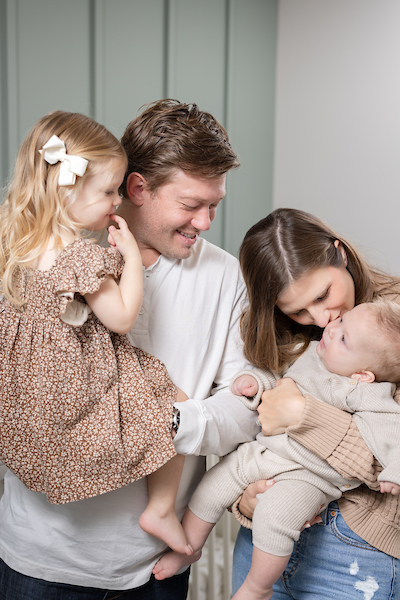
Mendlik successfully avoided a second infection. She healed well and finds amusement in her latest challenge: “Yeah, there’s a little jealousy with Hadi whenever I’m holding Grayson, like, ‘You’re holding him but not me.’”
But the proud big sister loves her new title, and Mendlik feels blessed to be able to enjoy such precious moments between the two of them pain-free – something she credits her OT team with.
“I think the fact that Women’s even thought about offering something like this says a lot about how patient-focused they are,” she said. “Society, I feel, has really downplayed the seriousness of a C-section. Like, you get one, you go home, and you’re expected to care for this baby that has everyone’s attention and focus. But you just had a major surgery and are told to ‘take it easy.’ What does that even mean? I think the guidance, support and education they’re providing says that they get it. They really want to help get moms back to themselves – and safely.”
More Resources
- Read more from the fall/winter 2024 issue of The Meaning of Care Magazine.
- Learn more about occupational therapy at Methodist.

